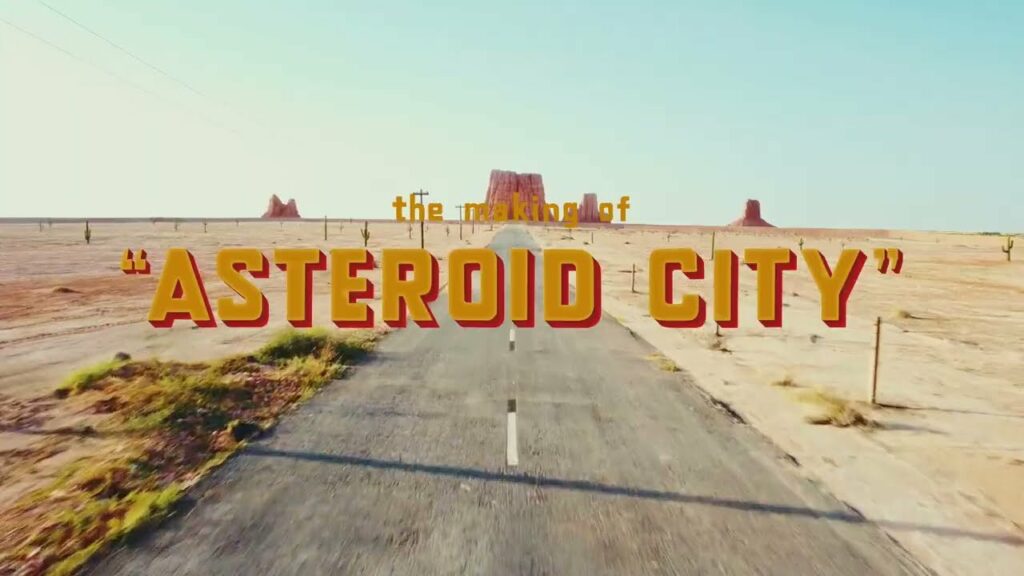Wes Anderson’s latest picture Asteroid City is named for the small Arizona town (population: 87) in which its central story takes place. That town, in turn, is named for the incident that made it (modestly) famous: the impact of an asteroid that left behind a large crater. That crater was one of the features that Anderson and his production designers had to make for the shoot — but then, so was everything else in Asteroid City, which had to be raised whole in an out-of-the-way area of Spain. Unlikely though it may sound in itself, the cinematic project of re-creating the American West in southern Europe isn’t without precedent: the “Spaghetti Westerns” of the nineteen-sixties and seventies also relied on the Spanish desert to provide the right atmosphere of sublime desolation.
Just as movies like A Fistful of Dollars or Django are rooted in a certain conception of the second half of the nineteenth century, so Asteroid City is rooted in a certain conception of the middle of the twentieth. This comes through most clearly in the architecture of their sets.
“The thing was to try to make buildings that were as evocative of the time as we possibly could,” Anderson says in the short making-of video above. But this thoroughly midcentury-provincial setting also needed its mysterious elements: the crater, of course, but also the observatory and “the freeway on-ramp there that goes to nowhere.” The fully assembled Asteroid City felt like not just a set, but something approaching an actual place: “Once it was built, we could be a tiny group in this what seemed like an abandoned town.”
Anyone who’s spent enough time road-tripping across the United States of America will recognize that, continental location notwithstanding, Asteroid City captures something essential about that country’s more remote settlements, inhabited or not, located in arid regions or otherwise. This required the fabrication of not just buildings but the flora, fauna, and geological formations of an entire landscape, practically all of it adherent to Anderson’s signature handmade aesthetic scheme, which somehow convinces through artificiality. Even detractors of Anderson’s work surely derive pleasure from the resulting quality of sheer physicality, some of which also owes to his still shooting on good old 35-millimeter film — as this video’s publisher, Kodak, doesn’t hesitate to remind us.
via Laughing Squid
Related content:
Wes Anderson Movie Sets Recreated in Cute, Miniature Dioramas
Photographer Revisits Abandoned Movie Sets for Star Wars and Other Classic Films in North Africa
A Star Wars Film Made in a Wes Anderson Aesthetic
Based in Seoul, Colin Marshall writes and broadcasts on cities, language, and culture. His projects include the Substack newsletter Books on Cities, the book The Stateless City: a Walk through 21st-Century Los Angeles and the video series The City in Cinema. Follow him on Twitter at @colinmarshall or on Facebook.
